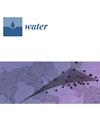A Quasi-Steady Model for Estimating the Rate of Frost Heave When Subjected to Overburden Pressure
IF 3
3区 环境科学与生态学
Q2 ENVIRONMENTAL SCIENCES
引用次数: 0
Abstract
The soil beneath buildings constructed in cold regions is affected by frost heave, causing the walls to crack and even the buildings to incline and collapse. Therefore, predicting the frost heave when subjected to overburden pressure is crucial for engineering buildings in cold areas. Utilizing the conservation equation of mass, Darcy’s equation, and the assumption that the pore water pressure at the top of a frozen fringe, denoted as uw, during the quasi-steady state can be approximately estimated using the Clapeyron equation, a quasi-steady frost heave rate model considering the overburden pressure was proposed. This study considered the difference in pore water pressure within the frozen fringe, which causes water to move from the unfrozen zone to the ice lens, where it subsequently accumulates and freezes into ice. The pore water pressure at the bottom of the frozen fringe, denoted as uu, can be estimated using the soil water characteristic curve (SWCC). The thickness of the frozen fringe was determined using the freezing temperature, segregation temperature, and temperature gradient. The segregation temperature was determined using the two-point method. Additionally, the model suggested that, when uw = uu, the movement of water stopped, leading to the end of frost heave. To validate the proposed model, three existing frost-heaving experiments were analyzed. The findings demonstrated that the estimated rates of frost heave of the samples closely matched the experimental data. Additionally, external pressure delayed water migration. This study can offer theoretical support for building engineering in cold regions.用于估算承受覆土压力时冰霜移动速度的准稳定模型
在寒冷地区建造的建筑物下面的土壤会受到冻胀的影响,导致墙壁开裂,甚至建筑物倾斜和倒塌。因此,预测承受覆土压力时的冻胀对寒冷地区的建筑工程至关重要。利用质量守恒方程、达西方程,并假设冻结边缘顶部的孔隙水压力(用 uw 表示)在准稳态时可通过克拉皮隆方程近似估算,提出了一个考虑覆土压力的准稳态冻胀率模型。该研究考虑了冻结边缘内的孔隙水压力差,该压力差导致水从未冻区向冰透镜移动,随后在冰透镜处积聚并冻结成冰。冻结边缘区底部的孔隙水压力(用 uu 表示)可通过土壤水特性曲线(SWCC)估算。冻结边缘的厚度是通过冻结温度、离析温度和温度梯度确定的。离析温度采用两点法确定。此外,该模型还表明,当 uw = uu 时,水的运动停止,从而导致冻胀结束。为了验证所提出的模型,对现有的三个冻胀实验进行了分析。结果表明,样本的估算冻胀率与实验数据非常吻合。此外,外部压力延迟了水的迁移。这项研究可为寒冷地区的建筑工程提供理论支持。
本文章由计算机程序翻译,如有差异,请以英文原文为准。
求助全文
约1分钟内获得全文
求助全文
来源期刊

Water
WATER RESOURCES-
CiteScore
5.80
自引率
14.70%
发文量
3491
审稿时长
19.85 days
期刊介绍:
Water (ISSN 2073-4441) is an international and cross-disciplinary scholarly journal covering all aspects of water including water science and technology, and the hydrology, ecology and management of water resources. It publishes regular research papers, critical reviews and short communications, and there is no restriction on the length of the papers. Our aim is to encourage scientists to publish their experimental and theoretical research in as much detail as possible. Full experimental and/or methodical details must be provided for research articles. Computed data or files regarding the full details of the experimental procedure, if unable to be published in a normal way, can be deposited as supplementary material.
 求助内容:
求助内容: 应助结果提醒方式:
应助结果提醒方式:


